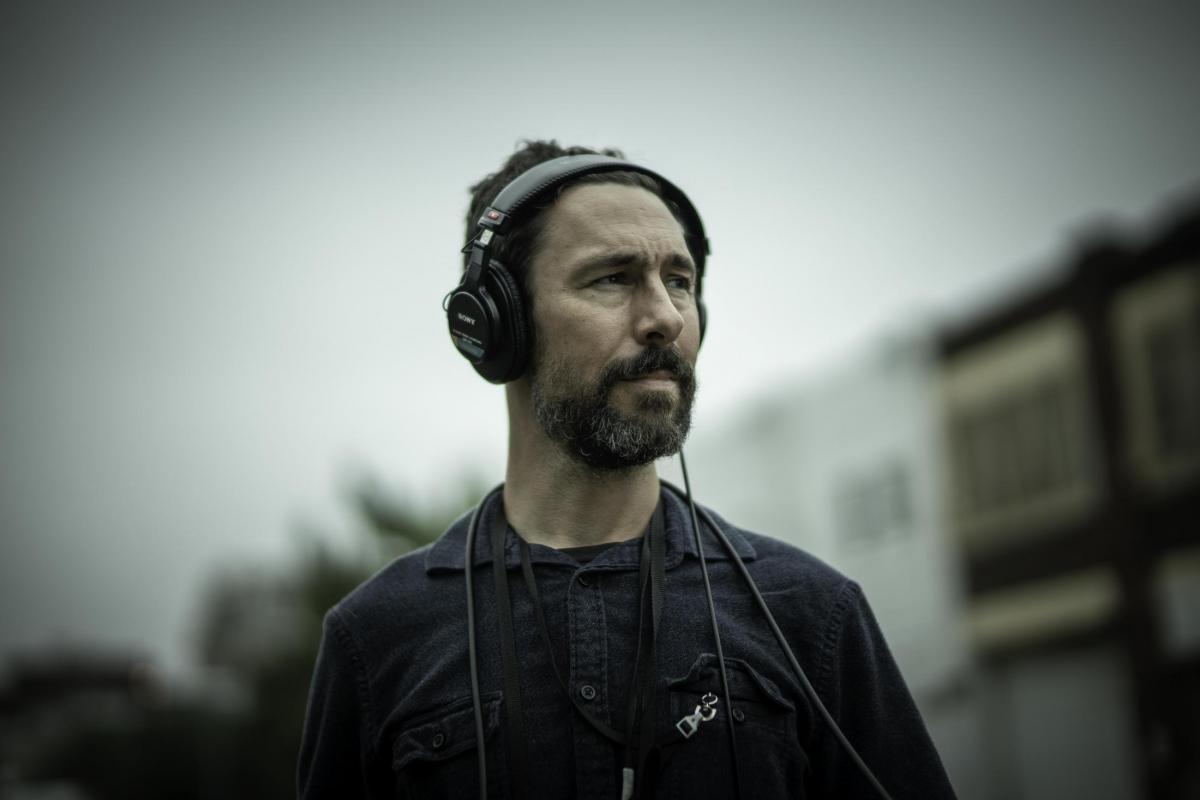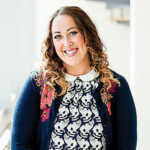
[Editor’s Note: On Thursday, August 26 at 6 p.m., WYPR will host a farewell celebration for Out of the Blocks on the pagoda observatory hill in Patterson Park. The free event invites creators, participants, and fans to celebrate the podcast’s nine-year run with producers Aaron Henkin and Wendel Patrick. Attendees can register, here.]
“Aaron Henkin here, coming to you from the WYPR studios on the 2200 block of North Charles Street.”
When WYPR’s Aaron Henkin—with a voice made for radio—aired the very first Out of The Blocks episode in 2012, it was “sort of a formal experiment,” says Henkin. He had no idea it would turn into a nine-year series with a catalogue spanning more than 80 episodes recorded in multiple cities. This summer marks the final season as Henkin prepares to move on to a new project.
Henkin is known for his storytelling. (Incidentally, his wife, Jessica Henkin, is co-founder of the Stoop Storytelling series.) His previous radio series The Signal was devoted to exploring Maryland’s thriving arts and cultural scene.
“I’m fascinated with people who have unusual jobs and the perspective that gives them on life,” says Henkin, by phone from the backyard of his home, birds chirping loudly in the background. That interest inspired Henkin to find stories that he didn’t know existed.
“That was the sort of long lead up to the light bulb moment,” he says, referring to the idea of wandering into the lives of complete strangers and finding their stories on one city block.
“A city block is this honeycomb of all these independent lives that are one adjacent wall to the next,” Henkin says. “But when you listen to them all together, you get the bigger story about a place.”
At the time, Henkin reached out to Wendel Patrick, who had been a guest on The Signal, about using some of his “instrumental stuff” for this new series. Patrick was intrigued, and offered to go a step beyond and create unique music for each episode based on the story. Patrick became co-producer and helped Henkin document his interview subjects through accompanying photography and videography.
“A city block is this honeycomb of all these independent lives that are one adjacent wall to the next,” Henkin says. “When you listen to them all together, you get the bigger story about a place.”
The very first area they focused on was the 3300 block of Greenmount Avenue. “We liked the idea of these city blocks that are hidden in plain sight, in a way,” says Henkin. “There are certain parts of town that get a lot of media attention—fawning or negative.” But he wanted to find a block that was a “backbone city block—the kind of block that you drive by without even realizing you drove by.”
“These mom-and-pop, small independent businesses. There are certain critical moments of life on these sidewalks and it had a good cross-section of entrepreneurs and locals.” Henkin just started showing up and hanging out every day. He’d walk into different businesses, introduce himself, and just be a quiet observer. No microphone. No questions.
Henkin and Patrick met people who had been in Baltimore for generations, but they also met immigrants from all over the world. A chicken carryout shop run by Afghani immigrants, a jewelry pawn shop owned by Ukrainians, the daughter of Chinese immigrants who helped her parents run their restaurant, a convenience store with a shop owner from Eritrea, a northeast African country on the Red Sea coast. “It was a miniature U.N.,” says Henkin. “Not a lot of people realize that Baltimore really is a city of immigrants.”
His methodology—“radio journalists are repulsed by what I do,” he laughs—was to ignore the cardinal rule of “always be recording,” and instead just let people get to know him. It was weeks before he pulled out his recording equipment, not until he knew everyone’s names and they knew his. Of course people are skeptical and initially keep you at arm’s length, he says. His goal was simply to be as “authentic as I could be in the philosophy of this project.”
His methodology was to ignore the cardinal rule of “always be recording,” and instead just let people get to know him.
After several weeks, people got used to seeing Henkin wandering around with all of his gear. He would sit and interview his subjects for 45 minutes or more, knowing that what would play on the radio would be a tiny snippet—a little vignette of these big lives they were leading.
What he found was that “people are actually quite willing and able to talk about their lives when you are there as a non-judgmental, active listener. It’s like therapy.” His subjects would often surprise themselves by what they were willing to talk about. He would simply give people the time and space to talk. “Getting comfortable with silence is a big part of being a decent interviewer,” he says.
After almost a decade of work, Henkin has heard countless immigrant stories, unbelievable love stories, and stories that still haunt him years later. “I’m not a licensed therapist, not a community activist, or a politician—but my purpose is taking these moments and amplifying them so that these voices and stories are heard.”
Henkin quotes the poet Muriel Rukeyser who said, “the universe is made of stories, not of atoms.” For him, knowing that listeners are tuning in to these stories means his subjects have left their mark. “I take purpose in the idea knowing that each story I hear, in turn gets heard by thousands of people.”
But not everyone wants their stories told. “I’ve gotten comfortable with rejection,” he says. He equates it to going on 25 first dates every time he walks on a new block. “With some you’re going to hit it off and have an immediate rapport and some people aren’t going to want anything to do with you.” His intention is never to pry into the lives of people who don’t want to participate.
And then there’s what he calls the “elephant in the room.” Henkin is white. Many of the people he interviews are not. “Part of the job is to absorb the skepticism of the people around me and earn any iota of trust that is bestowed on me,” he says.
Henkin quotes the poet Muriel Rukeyser who said, “the universe is made of stories, not of atoms.”
As the series went on, Henkin tried more and more to work with field producers who are “ambassadors to that block.” That was especially true when they started telling stories about other cities outside of Baltimore.
Thanks to distribution from PRX, a nonprofit media company specializing in audio journalism and storytelling—as well as grant funding from many sources including the Corporation for Public Broadcasting and the National Endowment for the Arts—Out of The Blocks has been launched to an even bigger audience. The grants allowed Henkin and Patrick to take Out of The Blocks to, well, other blocks, including Seattle, St. Louis, Atlanta, Detroit, Oakland, Juneau, Alaska, and a South Dakota Indian reservation. They even spent a week in Seoul, South Korea.
And now, as Henkin gets ready to move on, he hopes what he started—“this isn’t rocket science, this methodology”—continues with other storytellers. “It’s much more interesting than if we keep doing it ourselves,” he says. “Wendel and I accomplished everything we wanted to accomplish. It’s a wave of momentum beyond anything we could imagine.”
It’s time for the next thing. Henkin has always loved the idea that all of his shows, every episode, is “a leap of faith and trust in the eventual bounty of randomness.” And so with that in mind, he is working on a new program that is going ask the question: what do the listeners want to know?
“We hope to bring serendipitous moments of joy to the radio,” he says. Henkin is picturing solving mysteries, answering burning questions, and heading down some rabbit holes—all prompted by listener requests.
No matter how many people Henkin has interviewed, he wants more. He loves the mutually beneficial experience of storytelling. The person who tells that story gets something out of it, and “the act of listening is really a fundamental way to grow as a human being.”
Henkin says he’s never taken any of it for granted—his subjects, the trust of management at the radio station, all the listeners.
“It’s fundamentally changed me as a person,” he says, “and I’m really grateful for that.”
